Polestar 2 Arctic Circle Is An Ice-Ready EV With Prototype Launch Control
Polestar may have Chinese backing, but its Swedish engineers know cold weather and how to have fun in it: how else to describe this Polestar 2 Arctic Circle custom EV. Based on the standard all-electric Polestar 2 fastback, the car is designed to take full advantage of the icy test grounds that make up Polestar's back yard.
It also had to to satisfy one particular Polestar engineer with a vested interest in going sideways in the snow. Joakim Rydholm is chief chassis engineer for the automaker, but also a successful rally driver, and has been responsible for how enthusiastically Polestar cars drive long before the company went EV-only.
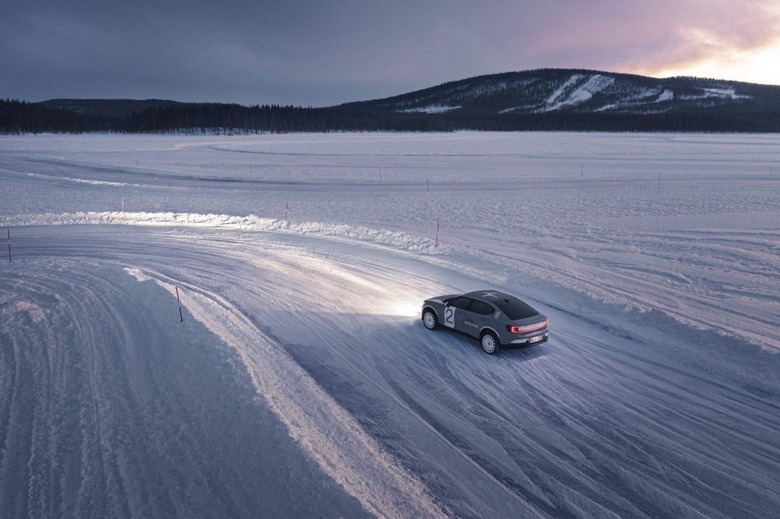
According to Rydholm, extreme cold testing is about more than just getting some epic drifts going. "Tuning a chassis on snow and ice allows us to develop our cars in what feels like slow motion and with better accuracy," the engineer points out. "With such low levels of grip, we can feel and analyze the dynamics at a much slower pace than on tarmac, which means we can really fine-tune the way our cars behave, down to the smallest details."
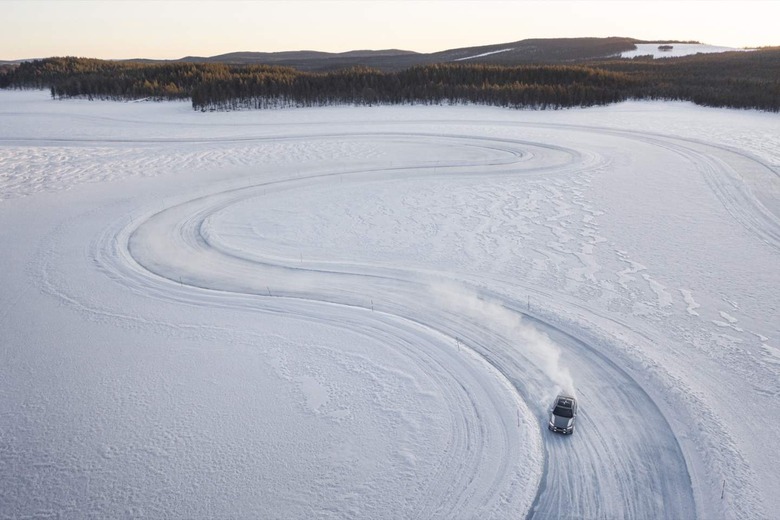
At first glance, you can't really see quite what makes the Polestar 2 Arctic Circle mechanically special. The ride height is the most conspicuous giveaway, a 1.18-inch lift over the standard fastback. The wheels themselves aren't what you'd find in the regular Polestar catalog, either: 19-inch OZ Racing rims have been selected.
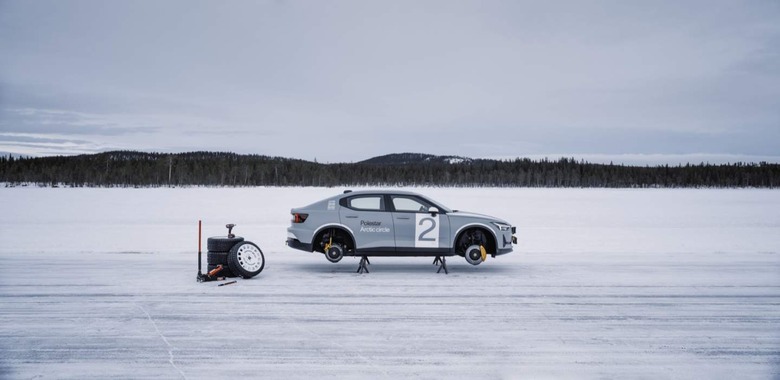
They're wearing custom-made studded winter tires (245/35 R19), each of which bristles with 490 metal studs. Each stud is 0.16-inches (4mm) in length, promising significantly more grip on snow and ice.
The AWD of the Polestar 2 Long Range Dual Motor is carried over, but the twin electric motors have seen a power bump. Horsepower is now 469 hp, up from the regular 408 hp, while torque is a hefty 502 lb-ft.
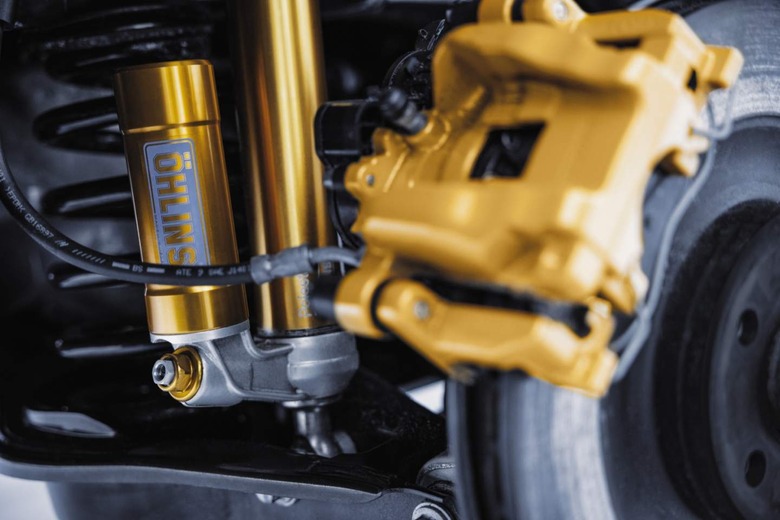
As with production Polestar 2 with the Performance Pack, there are adjustable three-way Öhlins dampers. They're set to the "nine clicks" setting – rather than electronic adjustment, each of the Polestar 2's dampers have a small knob on the top which can be manually tweaked across 20 levels – which, the automaker points out, is actually slightly softer than their usual, sporting configuration. The springs are 30-percent softer, too.
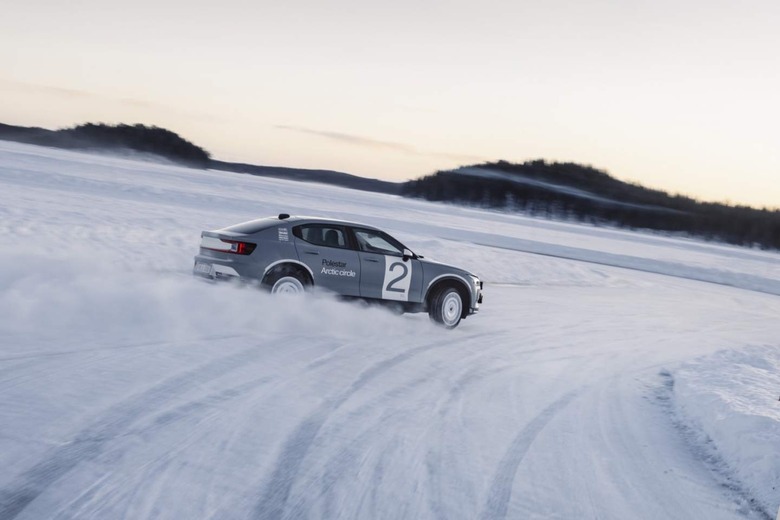
Auxiliary adjustment chambers are implemented on the dampers, while front and rear strut braces give a bump to torsional rigidity along with the responsiveness of the steering. Carried over are the standard 4-piston Brembo front brakes, which of course work with regenerative braking to feed power back into the battery when the EV is slowing.
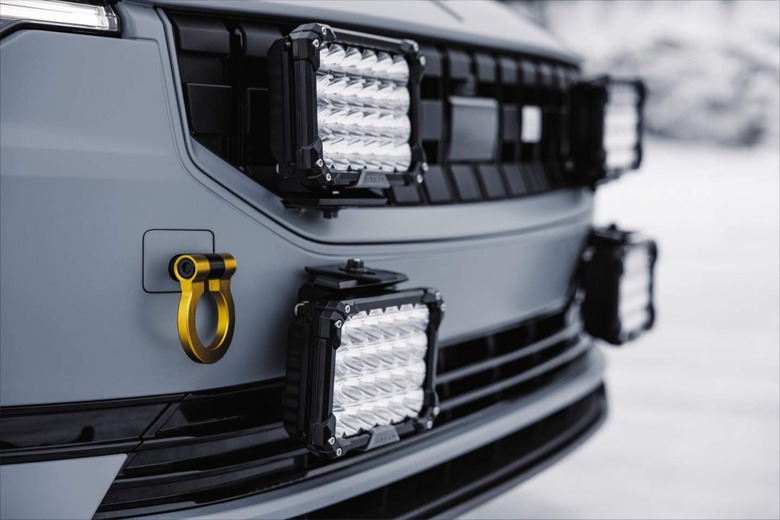
Four Stedi Quad Pro LED front lights have been added, for better visibility under grey, stormy skies. The paint job is a suitably ominous matte grey and white, with a carbon fiber skid plate added to the front bumper for extra protection to the underbody.
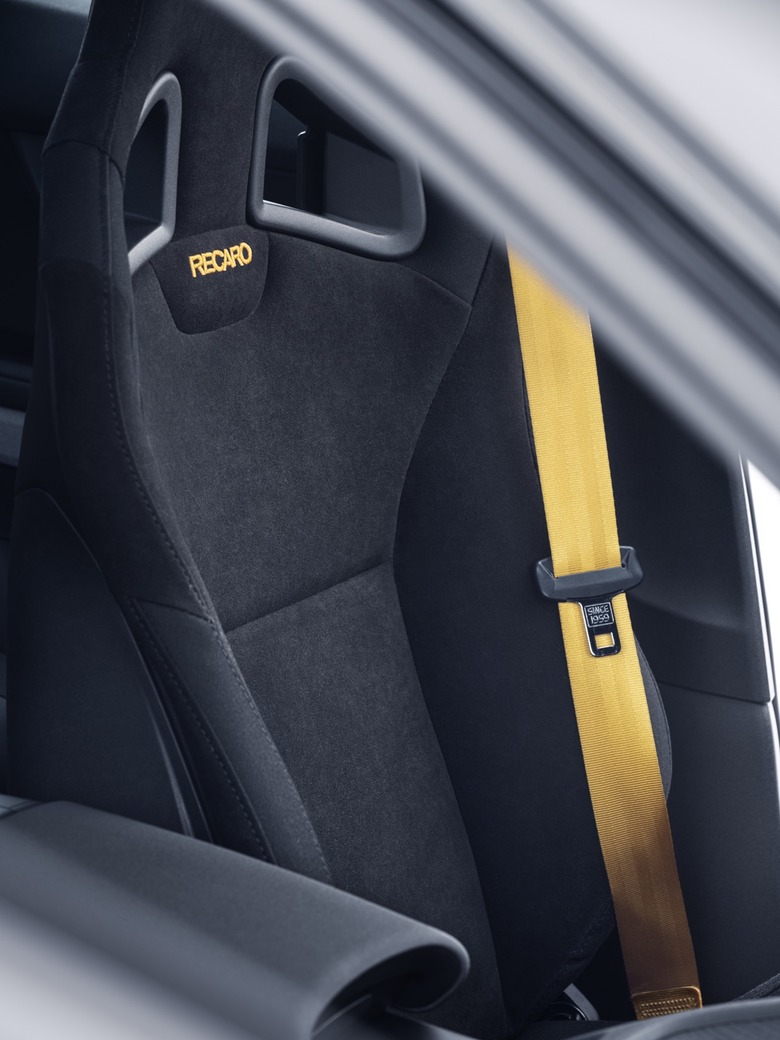
Inside, there are Recaro front bucket seats, custom-upholstered in charcoal. They get "Swedish gold" branding accents. Polestar also added a carbon fiber snow shovel and recovery strap: accessories designed to be as aesthetically pleasing as they are useful. Of course, in an ideal world you wouldn't need to resort to breaking them out in the first place.
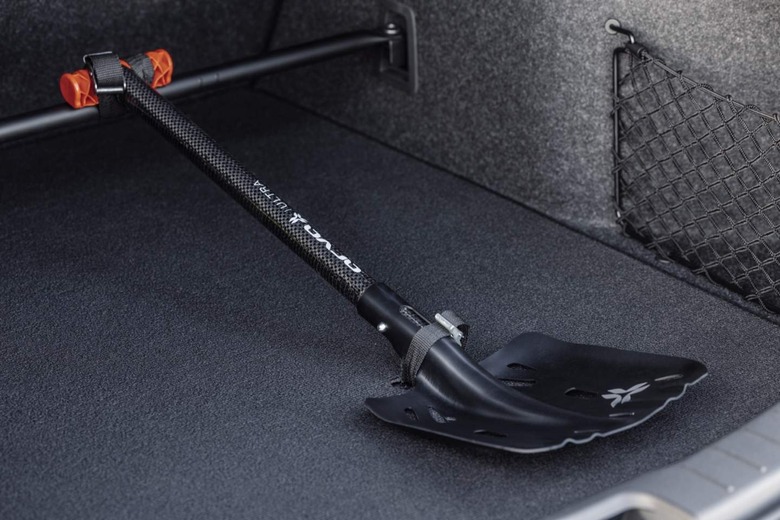
Arguably most interesting – and, so far, with scant detail provided – is the Polestar 2 Arctic Circle's "prototype launch control system." That, the automaker teases, is "integrated via steering wheel-mounted paddles," which you'd usually expect to handle gear changes in an internal combustion vehicle.
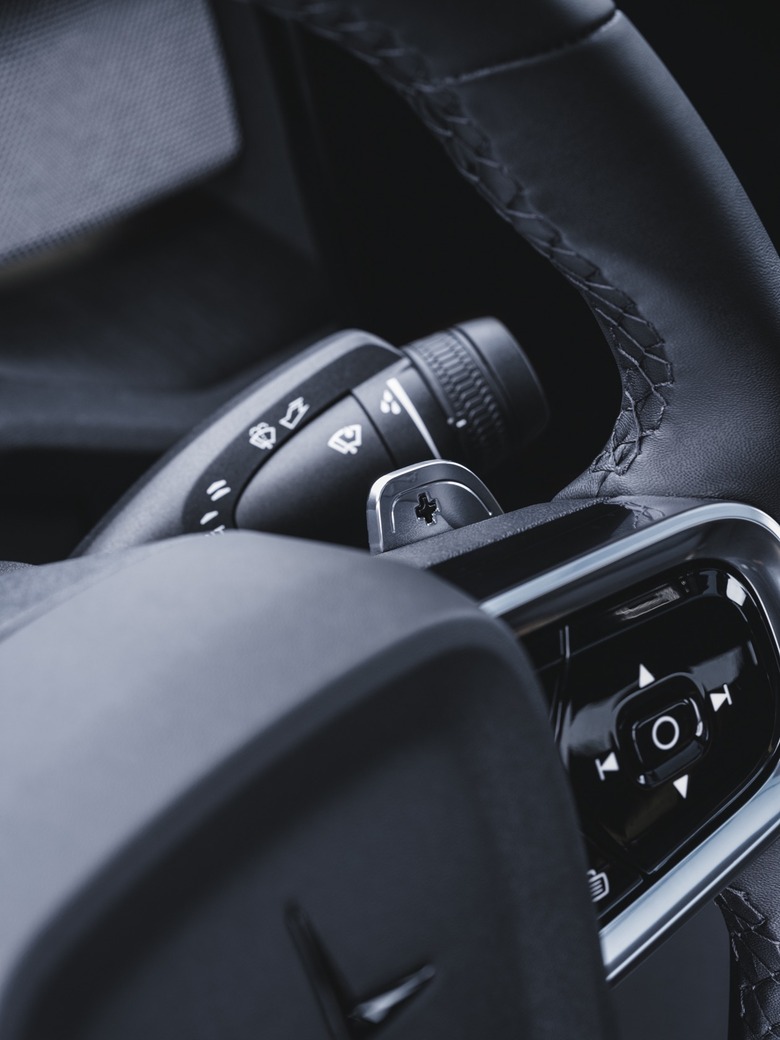
For an EV, however, the usual implementation of launch control is a temporary over-boost of the electric motors. That way you get the most impressive pick-up from a standing start, without putting too much strain on the drivetrain long-term. It's a feature the regular Polestar 2 lacks, so we'll be curious to see if this is a sign of more sporting ambitions from the company for future models or updates.
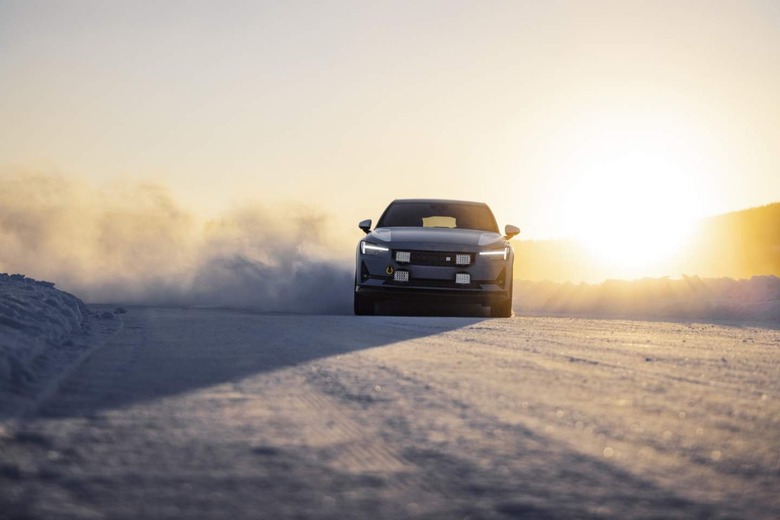
As for the Polestar 2 Arctic Circle itself, the automaker is blunt that this is a one-off experiment. The EV "is a unique showpiece and will not be put into customer production," Polestar insists. Still, as the number of Polestar customers grows – it sold 29,000 vehicles worldwide in 2021, predominantly Polestar 2 – it's not too hard to imagine some owners taking inspiration from this winter plaything for their own, unofficial modifications.
